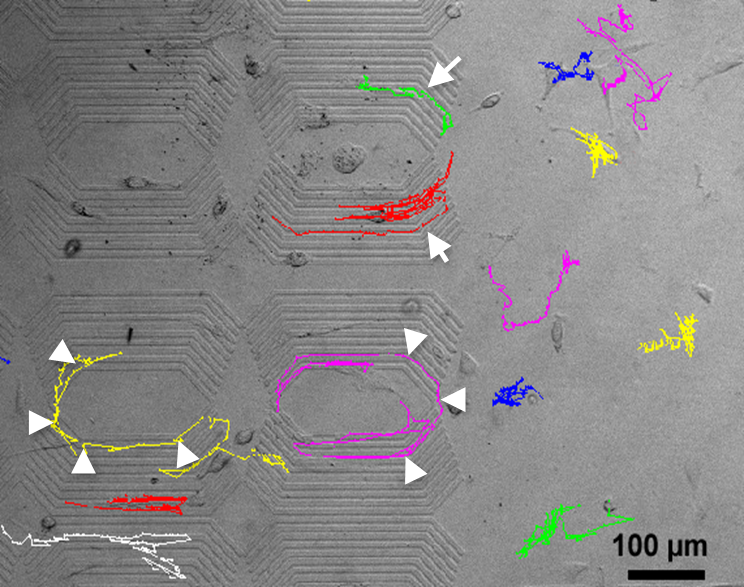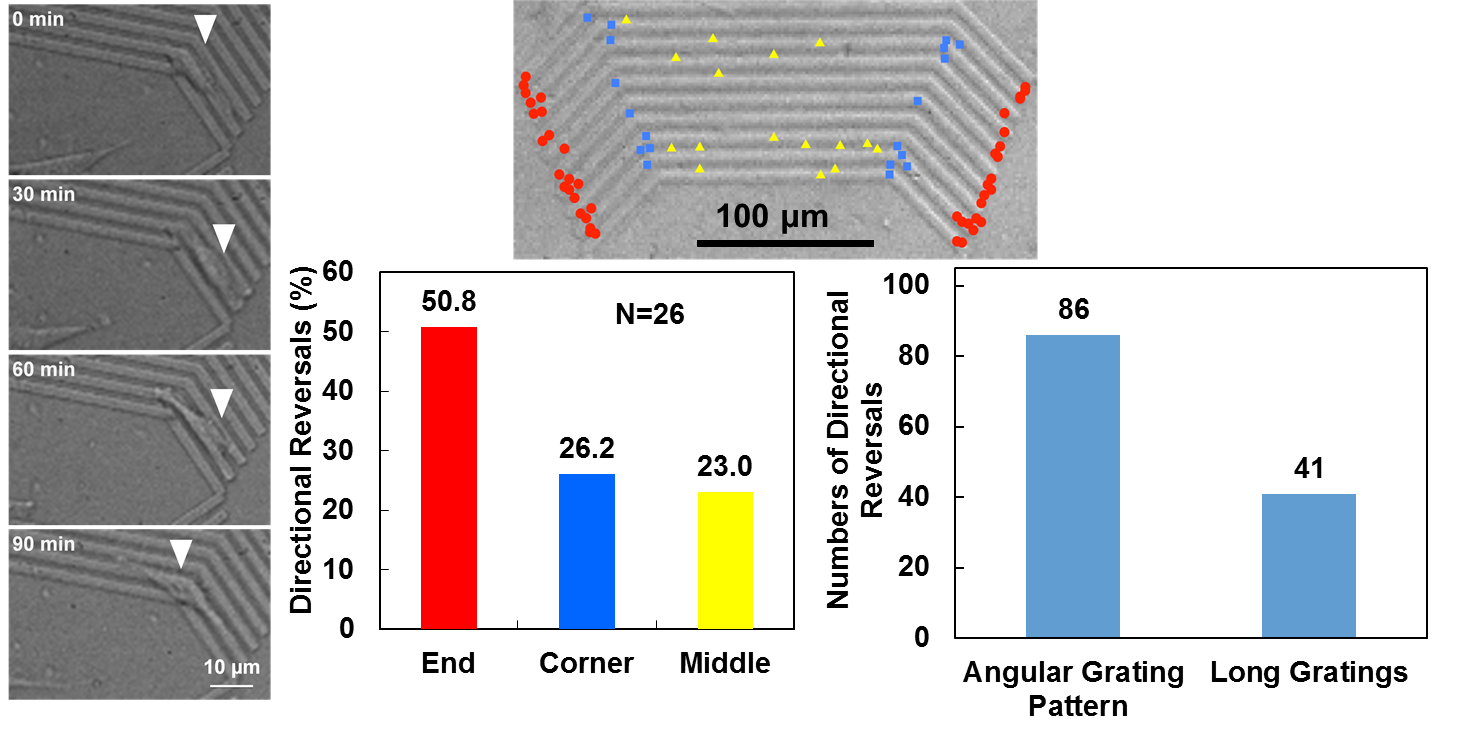| Members: | Dr. Yun W. Lam (BCH) - Project Leader
Prof. Stella W. Pang (EE) Prof. Peng Shi (MBE) Dr. David Chiu (BMS) Dr. Raymond Lam (MBE) |
Control of cell migration is important in numerous key biological processes, and is implicated in pathological conditions such as cancer metastasis and inflammatory diseases. Many previous studies indicated that cell migration could be guided by micropatterns fabricated on cell culture surfaces. In this study, we designed a polydimethylsiloxane (PDMS) cell culture substrate with gratings punctuated by corners and ends, and studied its effects on the behaviors of MC3T3-E1 osteoblast cells. MC3T3-E1 cells elongated and aligned with the gratings, and the migration paths of the cells appeared to be guided by the grating pattern. Interestingly, more than 88% of the cells cultured on these patterns were observed to reverse their migration directions at least once during the 16 h examination period. Most of the reversal events occurred at the corners and the ends of the pattern, suggesting these localized topographical features induce an abrupt loss in directional persistence. Moreover, the cell speed was observed to increase temporarily right after each directional reversal. Focal adhesion complexes were more well-established in cells on the angular gratings than on flat surfaces, but the formation of filipodia appeared to be imbalanced at the corners and the ends, possibly leading to the loss of directional persistence. This study describes the first engineered cell culture surface that consistently induces changes in the directional persistence of adherent cells. This will provide an experimental model for the study of this phenomenon and a valuable platform to control the cell motility and directionality, which can be used for cell screening and selection.


Tracking of movement of MC3T3-E1 cells on angular grating patterns and adjacent flat surface over a period of 1000 min.
Publications and Conference Presentations